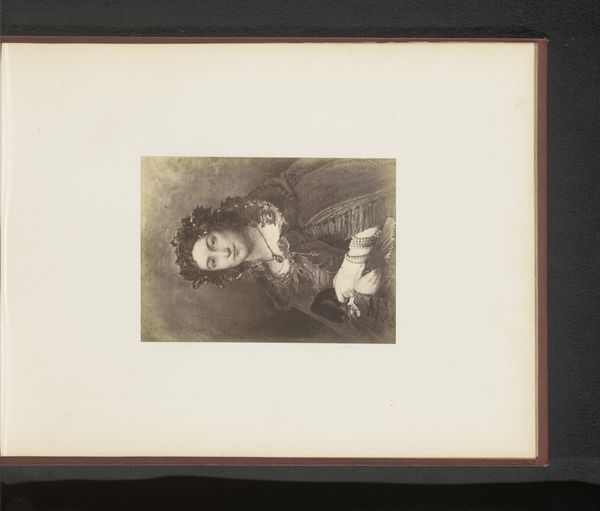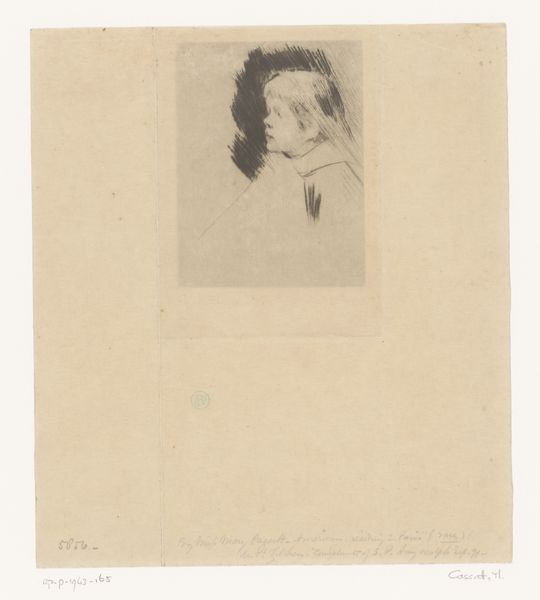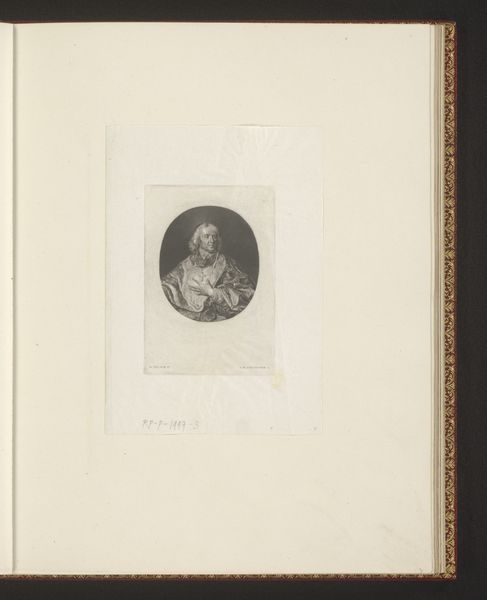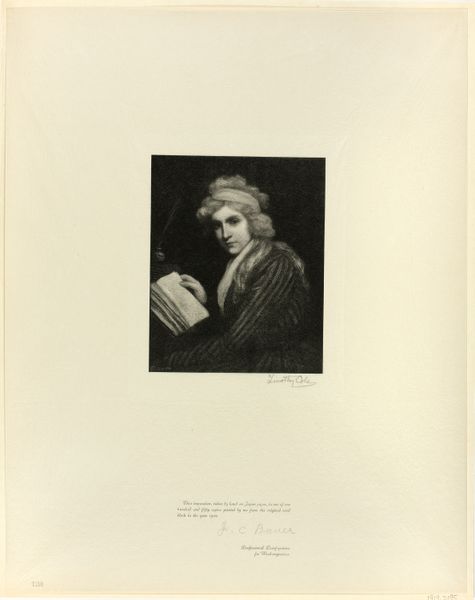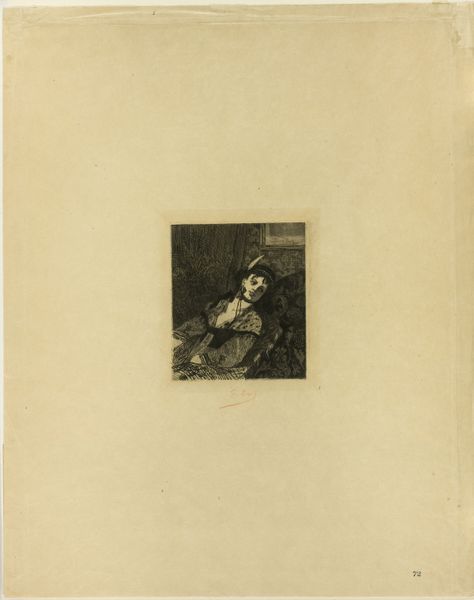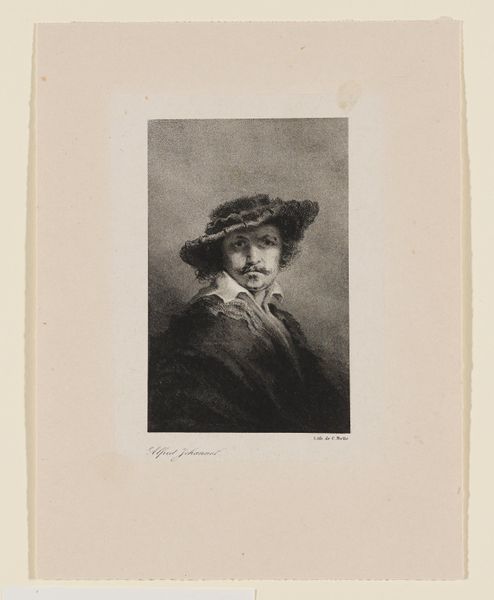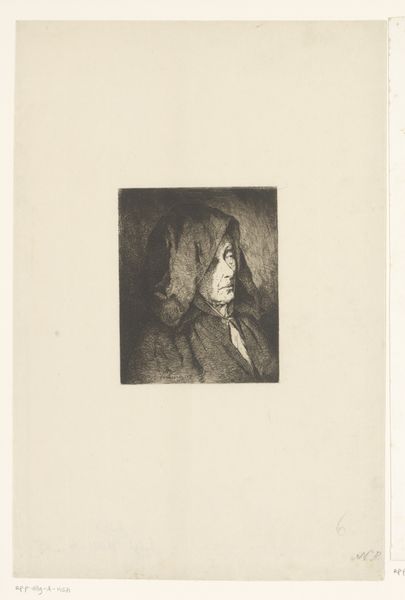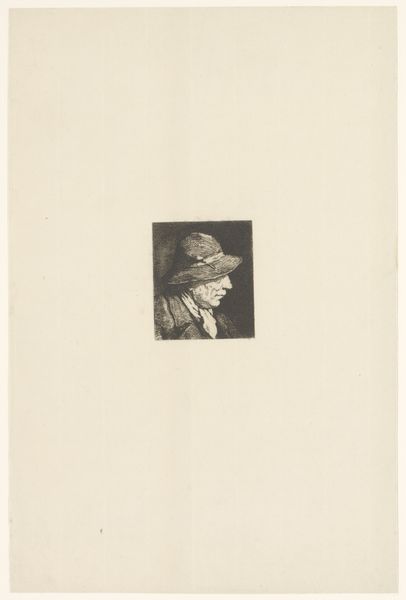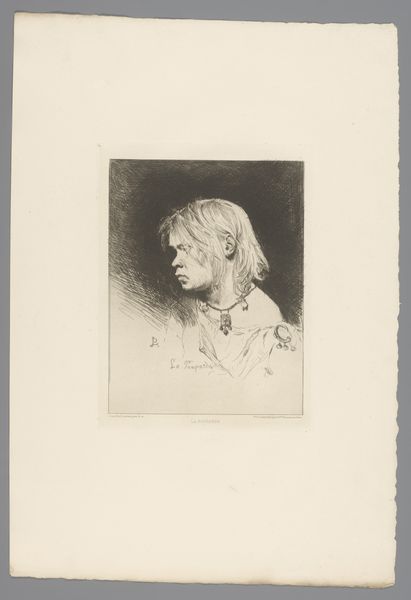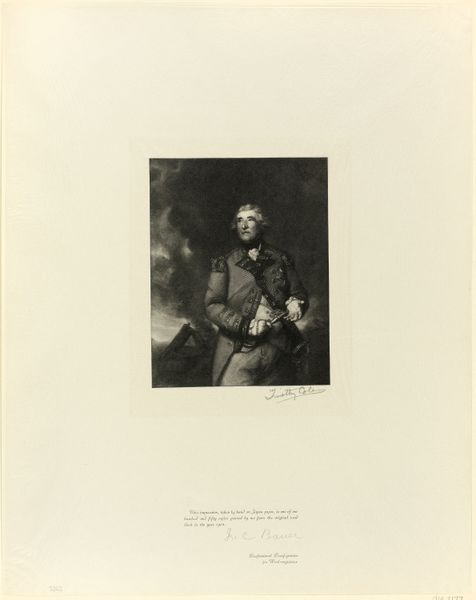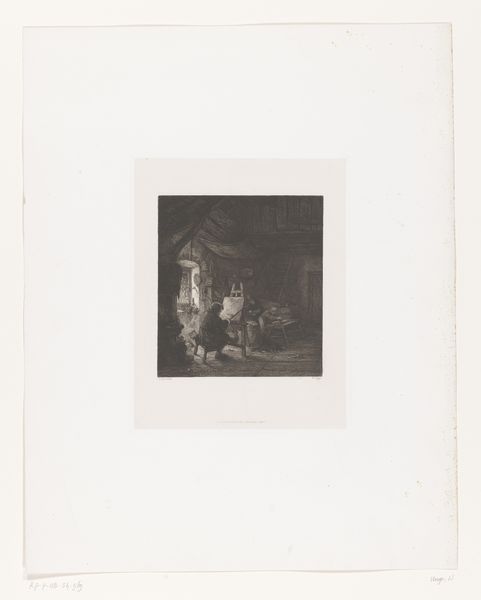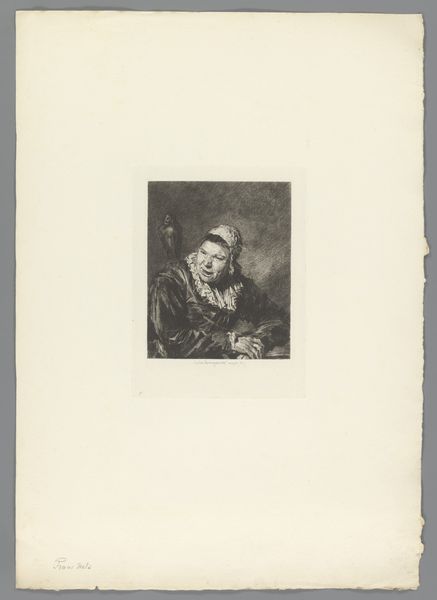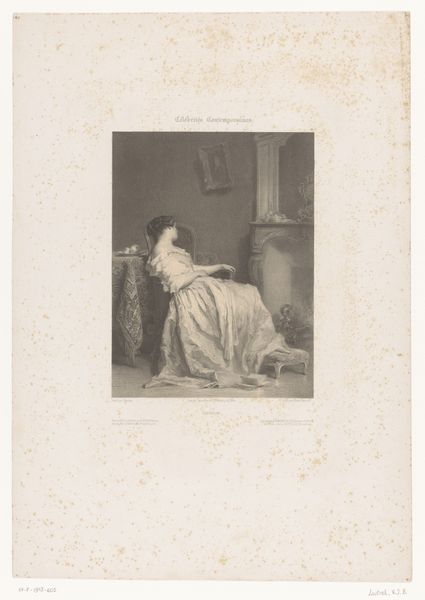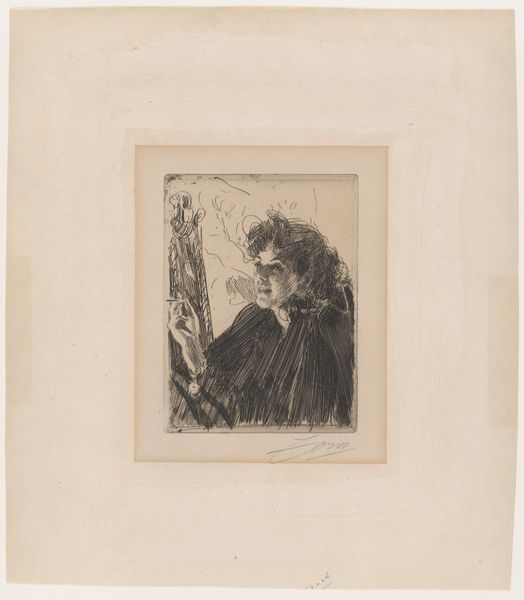
Reproductie van een schilderij van een portret van Emily Tennyson door George Frederick Watts before 1893
0:00
0:00
Dimensions: height 226 mm, width 176 mm
Copyright: Rijks Museum: Open Domain
Curator: This gelatin silver print captures my attention immediately. The tonality creates a certain softness and intimacy. Editor: Indeed. This photograph, believed to have been created before 1893, reproduces a portrait of Emily Tennyson by George Frederick Watts. The photograph is attributed to Henry Herschel Hay Cameron. What strikes you about its construction within the aesthetic and social conventions of its time? Curator: The photographic medium lends itself to very interesting interpretations of femininity and artistic agency here, particularly in this context of it being a reproduction of an existing portrait. Emily Tennyson herself represents the ideals of Victorian womanhood—domesticity, fragility, beauty... and her representation through Watts' painting then through Cameron's lens highlights how these were constructed and reinforced. Editor: Absolutely. And Cameron's own position as a prominent photographer operating within the Pictorialist movement is significant. Pictorialism sought to elevate photography to the status of fine art, often mimicking the soft focus and atmospheric effects associated with painting and printmaking. Considering that context, it’s fascinating to consider Cameron’s possible motivations to reproduce an image of her. Were photographic portraits of notable figures meant to disseminate an established legacy and political position? Curator: I agree. There's a very interesting power dynamic. Watts painted Tennyson, therefore framing her according to his artistic vision and perhaps Lord Tennyson's social standing. Then, Cameron reproduces it, adding another layer of interpretation and control to that representation. The resulting image becomes about Emily Tennyson, about the Tennyson family, and about art production itself, reflecting gendered artistic power structures, especially at a time of growing suffrage movements. Editor: Looking closely, the softness does invite emotional engagement. I wonder, could its romantic style and execution serve as a counterpoint to the harsh realities faced by many women during that period? Curator: Possibly. By presenting a seemingly idealized vision, it also silences, in a way, the complexities and lived experiences of women like Emily Tennyson, contributing to a simplified, often unattainable standard. Editor: Fascinating. Examining such an artwork definitely underlines the constructed nature of representation and the important role of art within social and political frameworks. Curator: I'm struck again by the inherent tension—between vulnerability and societal expectation.
Comments
No comments
Be the first to comment and join the conversation on the ultimate creative platform.
